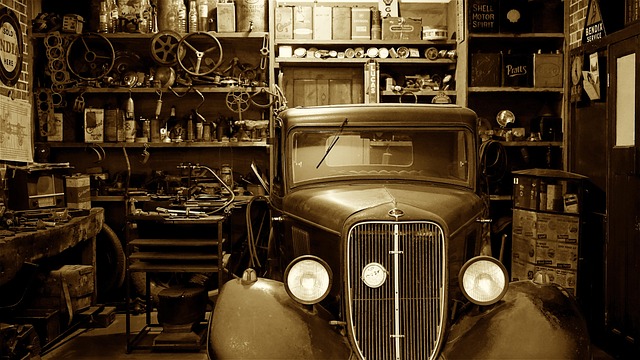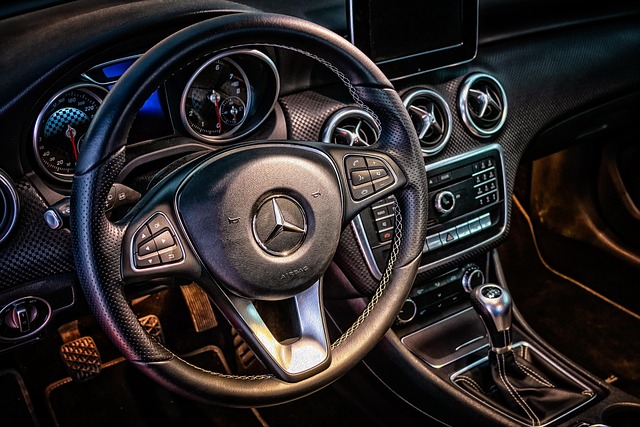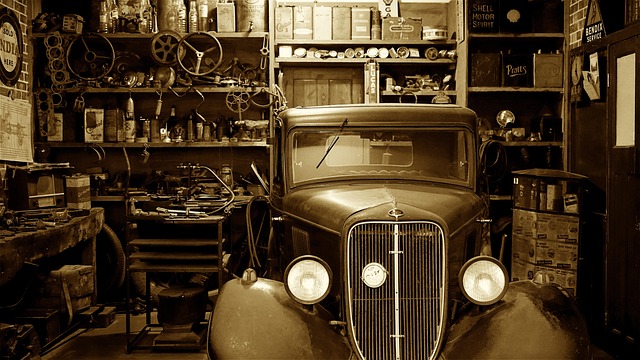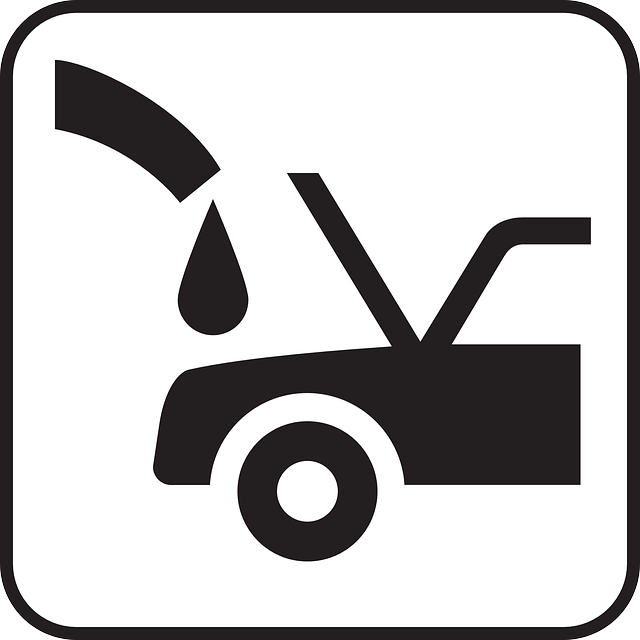Professional Collision Repair: Assessing Severe Damage with Advanced Tools
Professional collision repair shops employ a meticulous process after severe accidents, starting wit…….
Professional collision repair is a critical aspect of the automotive industry, focusing on restoring vehicles damaged in accidents or other incidents to their pre-incident condition. This intricate process involves skilled technicians utilizing advanced techniques and technology to ensure safety, quality, and customer satisfaction. In an era where vehicle technology is rapidly evolving, understanding professional collision repair becomes increasingly essential for both industry professionals and consumers alike. This article aims to provide a comprehensive exploration of this field, covering its history, global impact, economic implications, technological innovations, regulatory landscape, challenges, successful implementations, and future prospects.
Professional collision repair refers to the specialized process of repairing and restoring motor vehicles that have sustained damage. This includes but is not limited to accidents, natural disasters, or manufacturing defects. The primary goal is to bring the vehicle back to its original specifications while ensuring structural integrity, safety, and aesthetic appeal.
The core components of professional collision repair encompass:
Assessments and Planning: Technicians conduct thorough inspections to assess the extent of damage, create detailed repair plans, and estimate costs.
Structural Repair: This involves correcting misalignments, replacing or repairing damaged panels, and ensuring the vehicle’s frame is structurally sound.
Bodywork Restoration: Skilled technicians use specialized tools and techniques to straighten and reshape metal, restore finishes, and match original paint jobs precisely.
Paint Technology: Modern collision repair centers employ advanced paint matching systems and computer-aided technologies for precise color mixing and application, ensuring an indistinguishable finish.
Electronic Systems: With the increasing complexity of modern vehicles, collision repair technicians must also address electronic components like sensors, computer modules, and diagnostic systems.
Safety and Quality Assurance: Adherence to safety standards and quality control measures is paramount to prevent further damage and ensure customer satisfaction.
The origins of professional collision repair can be traced back to the early 20th century when the automotive industry began to take shape. As vehicles became more prevalent, so did the need for specialized services to address accidents and damage. The post-World War II era saw a surge in demand as damaged vehicles required extensive repairs. This period laid the foundation for the development of structured collision repair centers and trained technicians.
Over time, the industry evolved with advancements in technology, safety standards, and customer expectations. The introduction of computer-aided design (CAD) systems in the 1980s revolutionized precision cutting and panel replacement. Additionally, the rise of computer-aided manufacturing (CAM) software enabled faster and more accurate repair processes. These technological breakthroughs set the stage for modern collision repair practices.
Professional collision repair is a global industry, with varying degrees of development across regions. Developed countries often have well-established collision repair sectors, characterized by advanced facilities, trained technicians, and stringent safety standards. In contrast, developing nations may face challenges in terms of infrastructure, skilled labor, and access to modern technology.
North America: The United States and Canada are known for their sophisticated collision repair industries, driven by a high density of vehicles and strict safety regulations. Automated repair equipment and advanced paint technologies are widely adopted.
Europe: European countries have implemented stringent environmental and safety standards, influencing collision repair practices. The region is characterized by a mix of traditional and modern repair methods, with an increasing focus on eco-friendly solutions.
Asia Pacific: This rapidly growing region is witnessing significant investments in collision repair infrastructure, particularly in Japan and South Korea. The adoption of advanced robotics and automation is gaining momentum, reflecting the area’s commitment to efficiency and quality.
Latin America and Middle East: These regions are experiencing varying levels of development in collision repair, with a focus on expanding service offerings and raising industry standards.
The professional collision repair market is influenced by several factors, including:
Vehicle Fleet Growth: An increasing number of vehicles on the road directly correlates with higher demand for collision repair services.
Accident Rates: Regional variations in driving behavior and safety measures impact accident frequencies, thereby affecting market demand.
Economic Conditions: Economic downturns may lead to reduced vehicle repairs, while periods of economic growth often result in increased service requests.
Collision repair centers require substantial investments in:
Facilities: Modern, well-equipped workshops and equipment are essential for efficient and safe operations.
Training and Education: Ongoing training for technicians is critical to stay updated with industry advancements and maintain high-quality standards.
Technology: Adoption of the latest repair tools, software, and diagnostics ensures precision and reduces repair times.
Professional collision repair plays a vital role in economic systems by:
Employment: Providing employment opportunities for skilled technicians, supporting local economies.
Insurance Industry: Collison repair services are closely linked to the insurance sector, with repairs often facilitated through insurance claims.
Vehicle Resale Value: Quality collision repairs contribute to maintaining vehicle resale values, benefiting both owners and dealers.
Several technological advancements have revolutionized professional collision repair:
Robotics and Automation: Industrial robots assist in tasks like welding, painting, and panel replacement, increasing precision and reducing labor costs.
Computer-Aided Design (CAD) and Manufacturing (CAM): These technologies enable digital design, precise cutting, and efficient manufacturing processes, improving repair accuracy.
Advanced Paint Technology: Modern paint systems offer improved durability, faster drying times, and better color matching, enhancing the overall restoration process.
Electronic Diagnostics: Specialized tools allow technicians to diagnose electronic issues, ensuring proper repairs for modern vehicle systems.
The future of professional collision repair is poised for further technological integration:
Artificial Intelligence (AI): AI-powered systems can analyze damage patterns, predict repair times, and optimize resource allocation, enhancing efficiency.
Augmented Reality (AR) and Virtual Reality (VR): AR and VR technologies may be employed for training simulations, virtual inspections, and even remote repairs, offering new possibilities for technician education and service delivery.
3D Printing: 3D printing has the potential to revolutionize custom parts manufacturing, allowing for faster turnaround times and cost savings.
The professional collision repair industry is subject to various policies and regulations that ensure safety, quality, and ethical practices:
Safety Standards: Organizations like the National Highway Traffic Safety Administration (NHTSA) in the US and similar bodies worldwide set standards for vehicle safety during repairs.
Environmental Regulations: Many countries have strict guidelines regarding the disposal of automotive waste and the use of eco-friendly materials, influencing collision repair practices.
Consumer Protection Laws: These laws safeguard consumers’ rights, ensuring transparent pricing, quality workmanship, and dispute resolution mechanisms.
Training and Certification: Governments often mandate specific training and certification programs for technicians to maintain industry standards.
Regulatory frameworks play a crucial role in shaping the collision repair industry:
Standardization: Policies promote standardization of practices, ensuring consistent quality across repair facilities.
Safety and Quality Assurance: Regulations compel collision repair centers to adhere to safety protocols, minimizing risks during repairs.
Ethical Business Practices: Legal frameworks encourage fair pricing, honest advertising, and consumer protection, fostering trust in the industry.
Professional collision repair faces several challenges:
Skilled Labor Shortage: The industry struggles to meet the demand for skilled technicians due to high training requirements and changing career preferences.
Technological Complexity: Keeping up with rapidly evolving technology can be daunting, necessitating continuous investment in training and equipment.
Environmental Concerns: Proper disposal of automotive waste and use of eco-friendly materials are ongoing challenges, particularly with the increasing complexity of modern vehicles.
Addressing these issues requires a multi-faceted approach:
Training Programs: Developing comprehensive training initiatives can attract and educate the next generation of technicians, ensuring a skilled workforce.
Industry Partnerships: Collaborating between repair centers, manufacturers, and regulatory bodies can facilitate knowledge sharing and standardization.
Sustainable Practices: Encouraging eco-friendly technologies and waste management strategies will mitigate environmental impacts while meeting industry demands.
The following case studies highlight successful professional collision repair projects:
Case Study 1: Hurricane Recovery in Texas
After a major hurricane, a leading collision repair center in Texas was tasked with restoring numerous damaged vehicles. They employed advanced robotic systems for efficient body repairs and implemented a digital color matching system to ensure precise paint jobs. The center’s proactive approach and use of technology enabled them to restore hundreds of vehicles quickly, assisting in the region’s recovery efforts.
Case Study 2: Modern Luxury Car Repair
A high-end luxury car manufacturer collaborated with a specialized collision repair facility to develop a unique restoration process for their electric vehicles. The collaboration involved integrating advanced diagnostics and custom paint techniques. This partnership resulted in a seamless repair experience, maintaining the vehicles’ original aesthetics and performance, and enhancing customer satisfaction.
Case Study 3: Community-Focused Repair Initiative
A community-based collision repair shop launched an initiative to provide affordable repairs for low-income families. They partnered with local non-profit organizations, offering discounted services and training opportunities for at-risk youth. This program not only addressed the need for accessible collision repair but also fostered skills development and community engagement.
The future of professional collision repair holds several promising growth areas:
Autonomous Vehicles: As autonomous vehicle technology advances, collision repairs will evolve to cater to unique damage patterns and electronic system challenges.
Electric Vehicle (EV) Restoration: With the growing popularity of EVs, specialized restoration techniques for these vehicles will become increasingly important.
Remote Repair and Diagnostics: Advancements in remote technology may enable technicians to diagnose and perform basic repairs remotely, increasing accessibility.
Several emerging trends are shaping the industry:
Digital Transformation: The adoption of digital tools for design, communication, and documentation will streamline processes and improve customer engagement.
Sustainable Practices: There is a growing emphasis on eco-friendly materials, recycling programs, and energy-efficient facilities.
Data Analytics: Utilizing data analytics can optimize repair processes, predict maintenance needs, and enhance overall efficiency.
Professional collision repair is a vital component of the modern automotive industry, undergoing continuous evolution to meet changing demands and technological advancements. From its historical roots to its global impact and technological innovations, this field plays a critical role in ensuring vehicle safety and quality. As the industry navigates challenges and embraces emerging trends, it contributes significantly to economic systems, environmental sustainability, and consumer satisfaction.
Q: How do I choose a reputable collision repair shop?
A: Look for shops with proper certifications, positive customer reviews, transparent pricing, and a proven track record of quality repairs. Reputable shops will also provide detailed estimates and ensure all work is performed to industry standards.
Q: What are the signs of poor collision repair work?
A: Signs may include uneven paint jobs, misaligned panels, excessive rust or corrosion, and poorly fitted parts. Poor workmanship can also manifest in delayed repairs, inadequate communication, and unexpected charges.
Q: Are there any environmental considerations in collision repair?
A: Yes, the industry must adhere to strict environmental regulations regarding waste disposal, particularly for hazardous materials like solvents and heavy metals. Eco-friendly practices include recycling, using water-based paints, and implementing efficient waste management systems.
Q: How can I stay informed about the latest technological advancements in collision repair?
A: Industry publications, trade shows, and online forums are excellent resources to stay updated. Following reputable industry associations and engaging with professionals on social media platforms can also provide valuable insights into emerging trends and technologies.

Professional collision repair shops employ a meticulous process after severe accidents, starting wit…….

Understanding the estimate process at a professional collision repair shop is vital for restoring yo…….

Professional collision repair is a meticulous process involving assessment, frame straightening, and…….

In professional collision repair, Original Equipment Manufacturer (OEM) parts are indispensable for…….

In the professional collision repair industry, strict standards ensure safety, quality, and customer…….

Professional collision repair shops employ advanced technologies like CAD systems, 3D laser scanners…….

Professional collision repair goes beyond aesthetics, focusing on restoring structural integrity wit…….

Before hiring a professional collision repair service, conduct a meticulous inspection of your vehic…….

Professional collision repair provides superior results for damaged vehicles, employing certified te…….

In professional collision repair, safety protocols are paramount for protecting workers, customers,…….